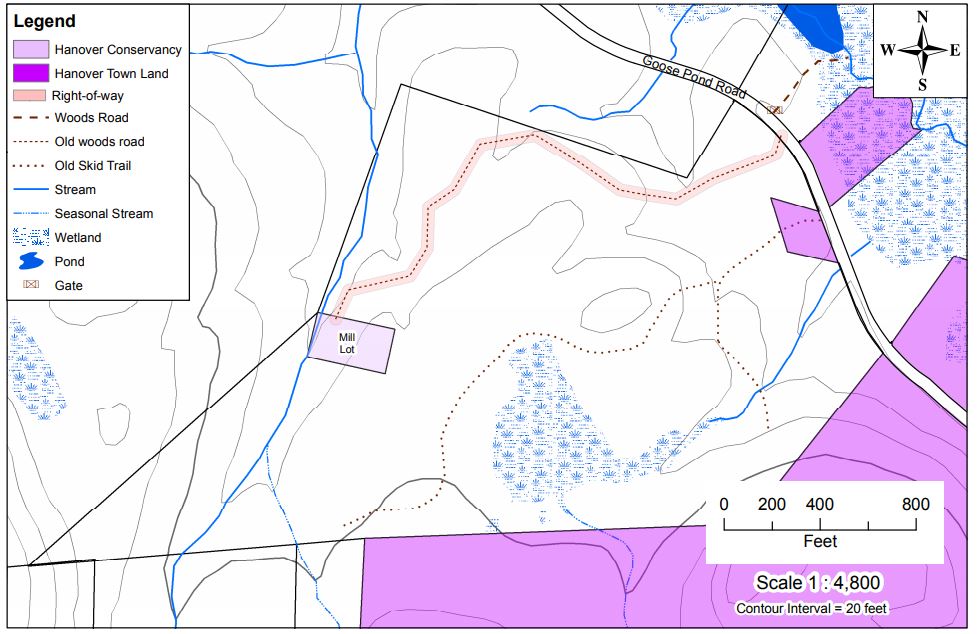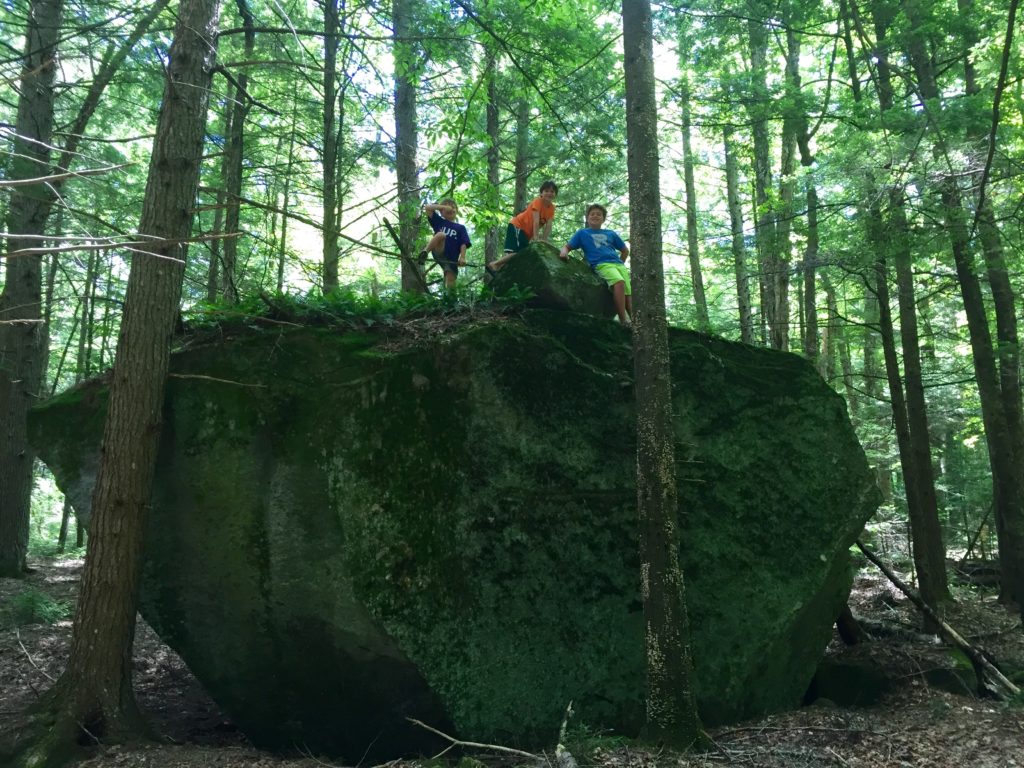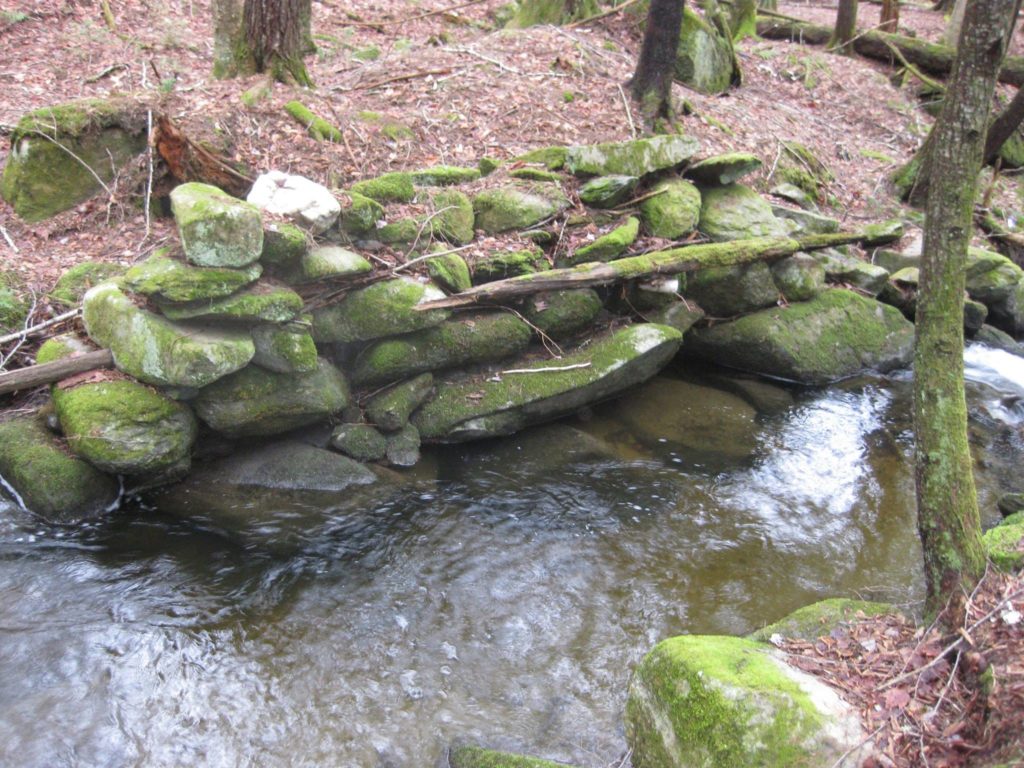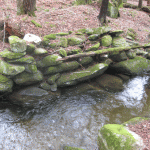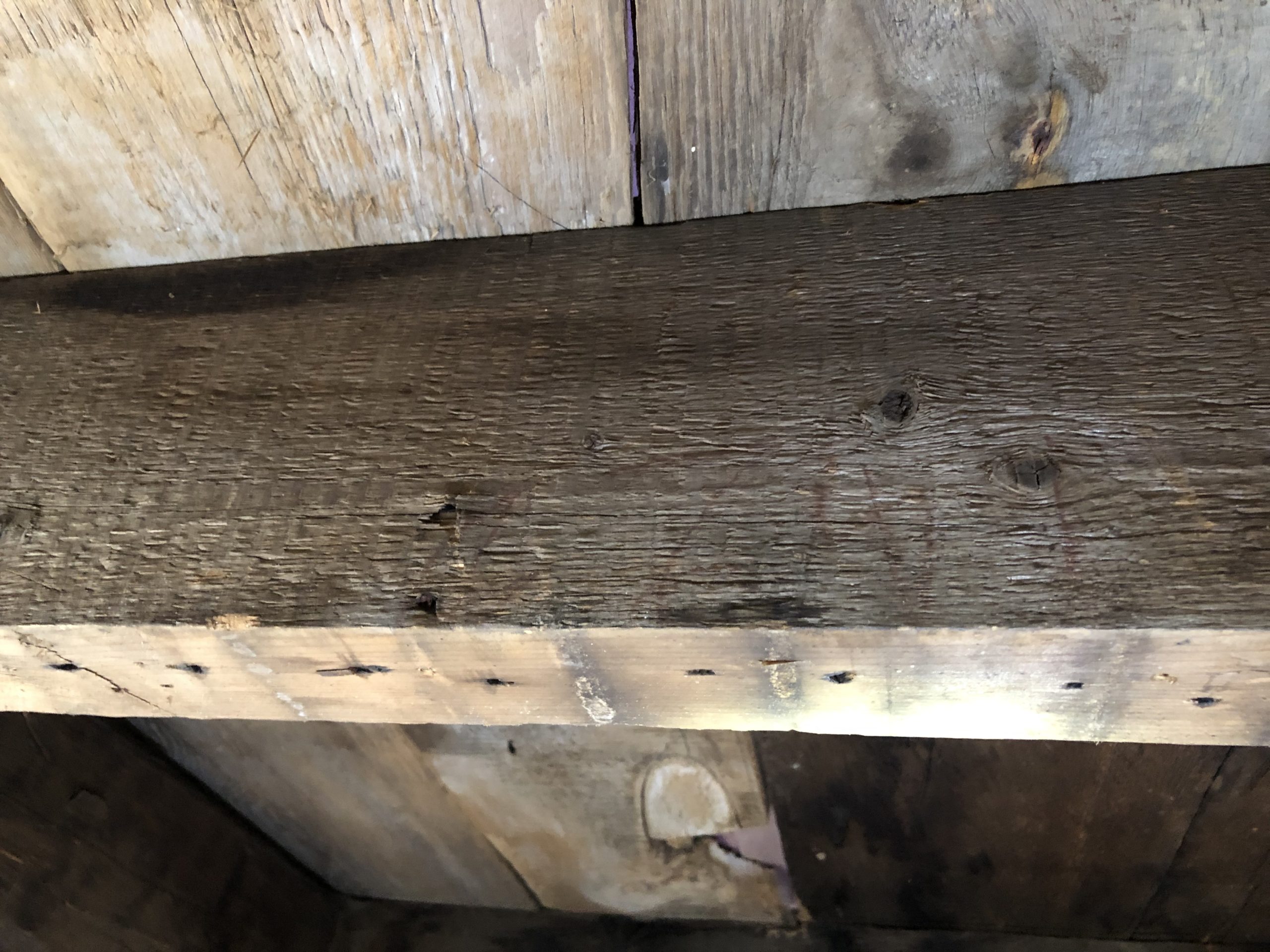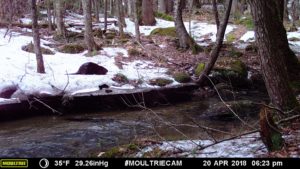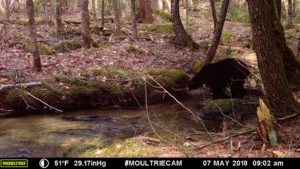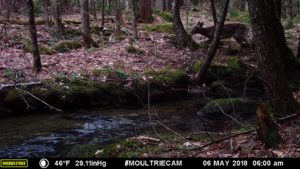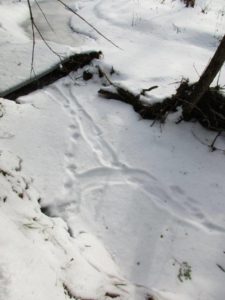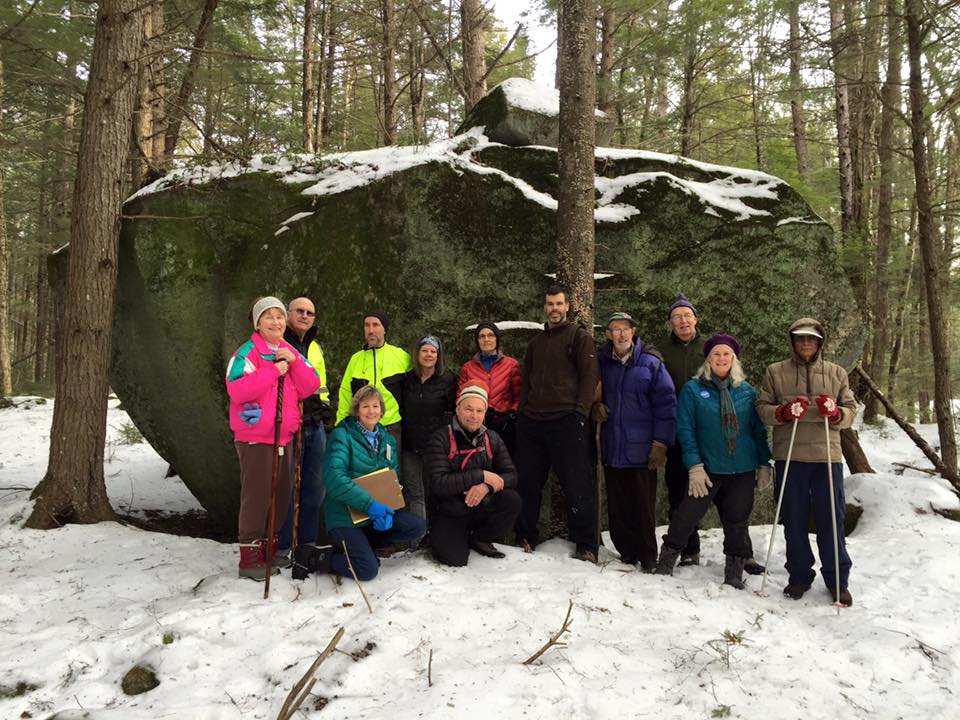
Hidden deep in the forests of Hanover’s northeast corner, on the shoulder of Moose Mountain, is the site of a late 18th/early 19th century sawmill on tiny Tunis Brook. The brook flows north to join Pressey Brook and eventually feeds Goose Pond. These waters are protected and purified by the healthy, mature forest sheltering Tunis Brook.
The Hanover Conservancy acquired the 1.5 acre parcel in 1994 following a town tax sale. Close to the Town of Hanover’s Goodwin Forest, Town Forest, and also its McKinley Tract and Marshall Brook Wetlands (which the Conservancy helped acquire in 1993 and 1977, respectively), the Tunis Brook Mill lot is another piece of the conservation puzzle in this wild corner of town. A dramatic glacial erratic (a huge boulder deposited by the glacier) rests just a few yards south of the property line.
How to get there
From Route 10, take Goose Pond Road 5.4 miles (1.6 miles from where the pavement ends for the second time). Find the entrance to the property on the south side of Goose Pond Road nearly opposite a gate bearing a yellow sign that reads, “Private Road. Bear Hill Reservation.” A green Conservancy trailhead sign is posted just left of the trail. Please park as far off Goose Pond Road as possible, and do not block the private road.
The rough, half-mile trail to the Tunis Brook Mill Lot is marked with flagging and continues across a right-of-way to Conservancy property and the brook. Please respect the private land over which the trail passes.
Related Articles
| A Trip Through Tunis History | September 12, 2022 |
| POP-UP THIS SUNDAY! Mindfulness at Tunis Brook | June 15, 2018 |
| Tunis Brook Mill Lot | February 1, 2017 |




